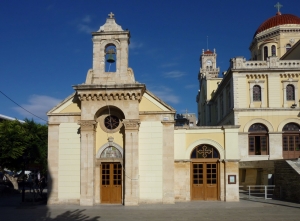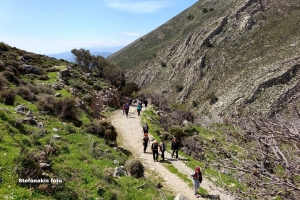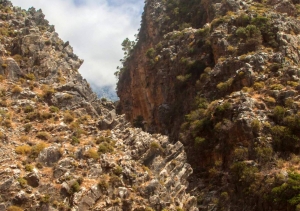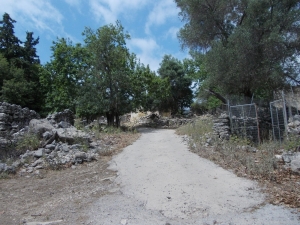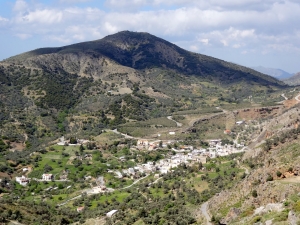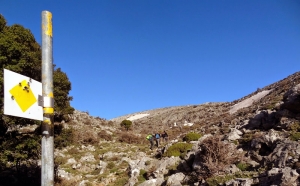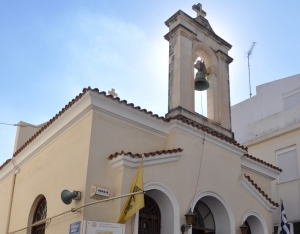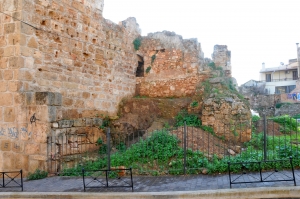Reference is made to the Chapel of St. Minas and the Virgin Mary Pandanassa in the inventories of Chandax churches in Venetian times. Having fallen into disuse for many years, in 1735 it was renovated to become the cathedral, thenceforth serving as the main centre for the Orthodox Christian faithful in Ottoman Chandax.
This E4 European trail part starts from Vassiliki, where there is a Minoan settlement, and heads east to the exit of the imposing gorge Ha, by the village of Monastiraki. From Monastiraki there is a dirt road and trail that climbs on the piney range of Thripti. From there we follow the old path of Kavousi.
The small gorge called Havgas starts near the Minoan settlement of Azorias and ends its course in Kavousi, being only 700m long. Crossing it through its stream requires technical (canyoning) equipment as there are six beautiful waterfalls, which the highest is 20 meters high and has water till late winter.
On the European hiking trail E4 connecting Alones to Agios Konstantinos, atop a hill near Moundros village, we meet the deserted settlement of Nissi. Its remaining collapsed houses depict that this place has an important past. Among the dilapidated houses, there survives the church of Saint George, while a few meters away there is the church of Panagia Nissiani.
The E4 part connecting Kamares to Zaros is mainly signed with red marks and most of it runs along dirt and paved roads. The route offers nice views to the south outskirts of Psiloritis Range and the historical importance of the villages we come through is high.
This part of the E4 trail connects the core of Rouvas Wood to the east outskirts of Psiloritis mount and gives its position to the next trail crossing the fertile valleys of Heraklion prefecture. It is quite tiring, as it ascends from altitude 950m to 1779m and then descends to 490m. The route offers a great experience of the oak wooded forest of Rouvas, the bare peaks of East Priloritis and, if you are lucky, a nice stay in the shelter of Prinos.
The present-day Church of Saint Paraskevi in Monis Kardiotissis St. was built in the early 20th century and consecrated on 13th June 1910.
This fortress was originally built by the Byzantines on the acropolis of ancient Cydonia, on a hill next to the present medieval City of Chania. This point is still the highest in the region, as you look at the right when walking to the Venetian harbor.











